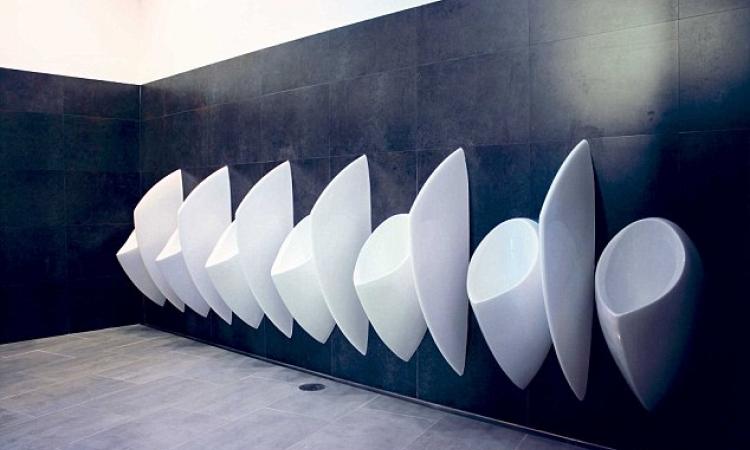
Bacteria and enzyme-filled green chemicals to clean toilets in Mumbai International Airport's Terminal 2
In a one of a kind initiative, bacterial culture and microorganisms will now be used to clean toilets in Mumbai International Airport's Terminal 2. This, apart from being an eco-friendly option, is also expected to save close to one lakh litres of water otherwise used in daily flushing and cleaning operations. The bacterial enzyme converts ammonia into nitrogen as soon as the toilet is used. This green mixture of bacteria and enzyme will be used to clean 200 latrines and toilet floor space in the terminal. Lab tests have proven that urinals using the green enzymes are odour free and cleaner.
Villagers in Jharkhand demand hike in Swachh Bharat subsidy
Residents of Kolbendi village in Jharkhand’s Bokaro district resorted to a novel protest option to get officials to pay heed to their woes. Demanding a hike in subsidy allotted for toilet construction under the Swachh Bharat Mission, the villagers threatened to defecate out in the open as a group if their demands were not met. Now, Rs 12,000 is being given as an incentive for families to construct individual household latrines which the villagers feel is not enough to construct a toilet and are demanding a hike in subsidy to minimise the financial strain.
Solid waste management projects initiated in more urban local bodies under Mission Nirmal Bangla
The West Bengal government has been working hard to ensure the state achieves all round cleanliness by initiating integrated solid waste management projects across 14 urban local bodies including Kolkata, Asansol and Jalpaiguri under Mission Nirmal Bangla. The state mission was announced along with the Swachh Bharat Mission in October 2014. Mission Nirmal Bangla aims to bring all existing sanitation projects under one scheme; four districts in the state have already been declared open defecation free. Construction of 1.5 lakh latrines has been initiated in 21 urban local bodies across the districts of Burdwan, South 24 Parganas and Cooch Behar to achieve the ODF status by March this year.
CPCB to come out with guidelines on buffer zones around landfills
The Central Pollution Control Board (CPCB) plans to come out with guidelines on maintaining buffer zones around landfill sites to minimise the impact of pollution on residents living around them. Landfills are among the least preferred options to manage solid waste owing to the disastrous effects they have on local air, water and soil. Therefore, provisioning of buffer zones around such facilities becomes a necessity to act as physical barriers which help minimise pollution exposure. Solid waste management is becoming a major concern, especially in cities and towns owing to rapid urbanisation. At present, the country produces 62 million tonnes of solid waste annually out of which only 12 million tonnes get treated.
Delhi's Lt Governor bats for using solid waste in constructing highways
As landfill sites are soon running out of space, the Lt Governor of Delhi, Anil Baijal has called for using solid waste in constructing highways. All three of Delhi’s landfills in Bhalaswa, Ghazipur and Okhla are on the brink of saturation. The East Delhi municipal corporation had earlier signed a MoU with the National Highway Authority of India for the use of solid waste from the Ghazipur landfill site for constructing part of the Delhi-Meerut Expressway on a pilot basis. The three civic bodies together are responsible for the generation of close to 8,370 metric tonnes of garbage in a day. The South Delhi municipal corporation is planning to inaugurate a second waste-to-energy plant near the Okhla dump yard with a capacity to treat 1,200 tonnes of solid waste.
This is a roundup of important sanitation related news published between February 25 and March 3, 2016.
Lead image courtesy: Daily Mail
/articles/bacteria-keep-airport-toilets-clean-mumbai